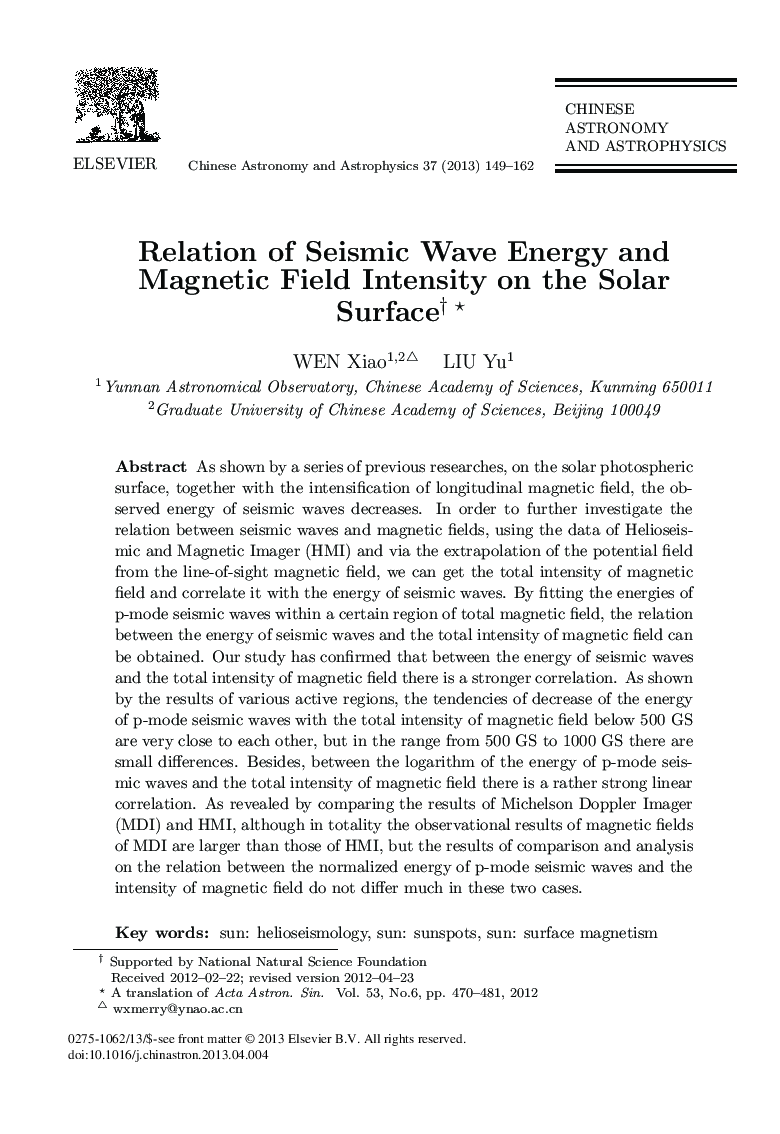| Article ID | Journal | Published Year | Pages | File Type |
|---|---|---|---|---|
| 1771860 | Chinese Astronomy and Astrophysics | 2013 | 14 Pages |
As shown by a series of previous researches, on the solar photospheric surface, together with the intensification of longitudinal magnetic field, the ob- served energy of seismic waves decreases. In order to further investigate the relation between seismic waves and magnetic fields, using the data of Helioseis- mic and Magnetic Imager (HMI) and via the extrapolation of the potential field from the line-of-sight magnetic field, we can get the total intensity of magnetic field and correlate it with the energy of seismic waves. By fitting the energies of p-mode seismic waves within a certain region of total magnetic field, the relation between the energy of seismic waves and the total intensity of magnetic field can be obtained. Our study has confirmed that between the energy of seismic waves and the total intensity of magnetic field there is a stronger correlation. As shown by the results of various active regions, the tendencies of decrease of the energy of p-mode seismic waves with the total intensity of magnetic field below 500 GS are very close to each other, but in the range from 500 GS to 1000 GS there are small differences. Besides, between the logarithm of the energy of p-mode seis- mic waves and the total intensity of magnetic field there is a rather strong linear correlation. As revealed by comparing the results of Michelson Doppler Imager (MDI) and HMI, although in totality the observational results of magnetic fields of MDI are larger than those of HMI, but the results of comparison and analysis on the relation between the normalized energy of p-mode seismic waves and the intensity of magnetic field do not differ much in these two cases.
